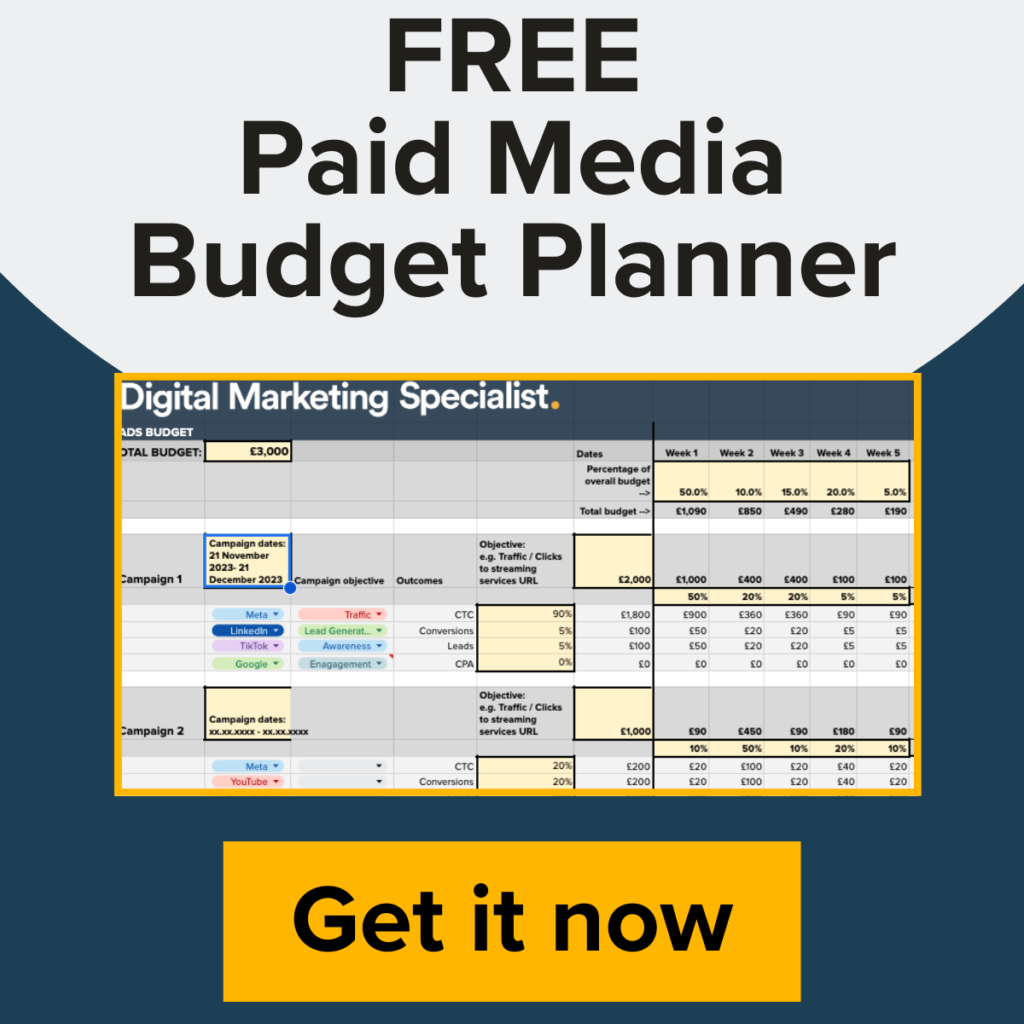Mastering paid media is important for businesses aiming to achieve efficient, value-driven advertising campaigns. This article distils professional advice on paid media strategies, focusing on key components, platform-specific tactics, and continuous optimisation.
Key Components of a Successful Paid Media Strategy
Clearly Defined Targets and Audience Understanding
A successful paid media strategy begins with setting measurable targets and understanding your target audience. Clear objectives ensure that campaigns are focused, well-directed, and efficient. Identifying who your customers are and what platforms they frequently use is crucial. This knowledge allows for tailored campaigns that effectively reach and engage the intended audience.
Effective Optimisation Strategies
Optimisation plays an important role in paid media campaigns. Continually reallocating the budget towards high-performing elements and away from underperforming areas can significantly enhance campaign effectiveness. This ensures that every pound spent contributes to achieving your business goals, maximising return on investment (ROI).
Platform-Specific Strategies
Google and YouTube
Advantages of Google Advertising
Google’s primary advantage is its ability to target high-intent users. Advertising on Google allows businesses to place their ads in front of individuals actively searching for solutions that match their offerings. This targeted approach often leads to higher conversion rates and more effective use of ad spend.
Best Practices for Google Campaigns
To get the most out of Google advertising, it’s essential to make full use of its features. Employing ad extensions, using responsive search ads, and integrating AI and machine learning into your campaigns can significantly enhance performance. Ensure you are utilising all available assets, such as images, site links, and promotional extensions, to provide the machine learning algorithms with ample data for optimisation.
YouTube for Action
YouTube, as the second largest search engine, offers powerful tools for both awareness and action-driven campaigns. The platform is increasingly used for product research, making it ideal for businesses aiming to influence purchasing decisions. Effective YouTube strategies include using a mix of ad formats such as YouTube Shorts, bumpers, and in-feed ads, and following the ABCD (Attention, Branding, Connection, Drive Action) principles to create engaging and effective video content.
Leveraging Meta Platforms (Facebook and Instagram)
Meta platforms, including Facebook and Instagram, provide versatile advertising opportunities for both B2B and B2C companies. Their extensive data on users allows for precise targeting options based on interests, demographics, and behaviours. For e-commerce businesses, leveraging product feeds for dynamic retargeting can significantly boost conversions. This involves showing ads to users who have previously browsed or added items to their cart, keeping your products top of mind, and encouraging purchase completion.
TikTok: A Future-Forward Platform
TikTok’s predominantly young audience makes it an ideal platform for brands looking to engage future customers early. Though still relatively new in the advertising space, TikTok offers unique opportunities for creating engaging, organic-feeling content that resonates with younger audiences. Effective strategies include optimising for specific conversion events and using user-generated content to enhance authenticity.
The Role of A/B Testing
Continuous Improvement Through Testing
A/B testing is essential for optimising paid media campaigns. It allows businesses to compare different creatives, landing pages, or other elements to determine which performs better. This iterative process helps refine strategies over time, ensuring continuous improvement and maximising ROI.
A well-executed A/B test can yield significant improvements, even with minor adjustments. For businesses with substantial ad spend, small gains in metrics like click-through rates can translate into substantial increases in overall conversions.
Continuous Optimisation Strategies
Regular Adjustments and Tweaks
Paid media campaigns require ongoing adjustments to maintain and improve performance. Regularly updating and optimising campaigns based on performance metrics is crucial. This involves turning off underperforming elements, launching new A/B tests, and making data-driven decisions to enhance campaign effectiveness.
Platforms like Google and Meta offer different optimisation opportunities. For instance, Google Search requires frequent reviews of search terms to exclude irrelevant ones, while Meta might benefit more from refining audience targeting.
Indicators for Campaign Adjustments
Monitoring Performance Metrics It’s vital to monitor performance metrics continuously. A negative trend in key metrics such as clicks, conversions, or click-through rates indicates the need for adjustments. Proactively addressing these issues helps in maintaining the effectiveness of the campaign and ensuring optimal use of the advertising budget.
Conclusion
Paid media is a powerful driver of business growth when leveraged correctly. Setting clear targets, choosing appropriate platforms, and continuously optimising through A/B testing and data analysis are fundamental to successful campaigns. At DMS, we are dedicated to helping you navigate the complexities of paid media, ensuring that your advertising efforts are both efficient and highly effective. Contact us today to transform your paid media strategies into successful campaigns.






